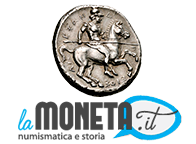Tutte le attività
Questo elenco si aggiorna automaticamente
- Ultima ora
-
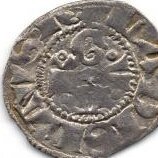
Milano Numismatica
santone ha risposto a un topic di El Chupacabra inviato in Segnalazione mostre, convegni, incontri e altro
Avanti per il gazzettino 13 -

Aiuto identificazione
santone ha risposto a un topic di Daniele7676 inviato in Richiesta Identificazione/valutazione/autenticità
https://numismatica-italiana.lamoneta.it/moneta/W-CR1/3 -

Raccolta di rebus attinenti alla Numismatica
apollonia ha risposto a un topic di apollonia inviato in Agorà
Altrettanto, apollonia -
Metaponto , contromarca ...
joannes carolus ha risposto a un topic di joannes carolus inviato in Monete greche: Sicilia e Magna Grecia
un altro bronzo con la stessa contromarca : asta Negrini 2018, n.147 gr.4,10 -

I tremissi che non dovrebbero esistere...
antvwaIa ha risposto a un topic di antvwaIa inviato in Monete Bizantine
Se concludiamo che il lotto non è tale, e cioé che non ha nessun senso mettere insieme questi tremissi, nessuno. E questa è anche la mia idea: tenere da parte il tremisse riportato dalla Morrisson e mettere una croce su tutti gli altri, dandoli come imitativi probabilmente sassanidi e di epoche diverse. Nel tremisse n. 6 al dritto c'è Tiberio II con il rovescio simile a quello del solido consolare: ma allora perché nel solido mettere i due busti e nel tremisse Tiberio II? Indicare motivi di spazio, non mi convince perché, per esempio, i due deka ciprioti non sono più grandi di un tremisse e riportano i busti frontali dei due consoli e il 2 nummi consolare, ben più piccolo, riporta i due busti (sovrapposti di profilo, anziché frontali). -

I tremissi che non dovrebbero esistere...
Poemenius ha risposto a un topic di antvwaIa inviato in Monete Bizantine
scusa ma quale moneta mixa Foca e Eraclio? -
Metaponto , contromarca ...
joannes carolus ha risposto a un topic di joannes carolus inviato in Monete greche: Sicilia e Magna Grecia
Salve, grazie per l'intervento; dovrebbe essere il tipo 12, ma con conromarca T - E -
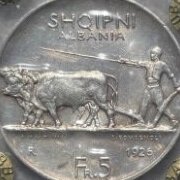
Carlo Emanuele III - Doppia 1767
Kriper0204 ha risposto a un topic di Oppiano inviato in Monete e Medaglie dei Savoia prima dell'unità d'Italia
Bellissima moneta nelle mani di chi sa apprezzarla, complimenti Oppiano!! -

Milano Numismatica
dabbene ha risposto a un topic di El Chupacabra inviato in Segnalazione mostre, convegni, incontri e altro
Sul sito della Nip Milano Numismatica - Oggi
-

ID Solidus ?
Poemenius ha risposto a un topic di Ajax inviato in Richiesta Identificazione/valutazione/autenticità
potrebbe essere Libio Severo di origine Gallico/Visigoto -

Aiuto identificazione
Daniele7676 ha aggiunto un nuovo link in Richiesta Identificazione/valutazione/autenticità
Buongiorno Scusate per la pessima qualità delle foto...ma non riesco a farne di migliori. Gradirei avere un vostro aiuto per identificare la moneta di dimensioni circa 16 mm e peso sul grammo... Grazie per aiuto -

I tremissi che non dovrebbero esistere...
antvwaIa ha risposto a un topic di antvwaIa inviato in Monete Bizantine
Cioe Poemenius. Sono pienamente d'accordo con quanto scrivi. Il nocciolo della questione è la frase tua finale: cominciando da Hahn sul MIB, collocano in una famiglia tutte questi tremissi caratterizzati da un "mix di coni" e questo non mi convince per niente. Poi, da Hahn in poi questo mix eterogeneo, o una parte di esso, viene attribuito ad una "zecca itinerante" che accompagnava l'esercito dei consoli Eraclio al comando di Niceta e ne propongono la coniazione quando la zecca itinerante si trovava a Cipro. Questa attribuzione si basa sul termissi n. 6, presentato da Morrisson nell'articolo del 1967, che tuttavia attribuisce gli Eraclio consoli solamente questo tremisse in modo isolato e non prende in considerazione gli altri tremissi (e semissi) spuri. Sul non mescolare questo tremisse con gli altri spuri, sono pienamente d'accordo con Cecile Morrisson. Tutti gli altri, a me pare che siano qualcosa di diverso e che non esistano prove né per attribuire loro un'autorità unica responsabile della loro coniazione, né una stessa area geografica di provenienza: in altre parole, mi pare un lotto molto eterogeneo, proveniente da emissioni non ufficiali, imitative, forse opera dei sassanidi durante la loro lunga guerra con l'impero bizantino. Separiamo, dunque, il tremisse n.6 presentato da Morrisson e proveniente dalla raccolta di Said Pacha, escludiamo tutti gli altri 11 (16 se aggiungiamo gli esempi del MIB II e del MIBEC), e a questo punto ripropongo a tutti i lettori del blog la domanda fatta precedentemente: se voi foste Eraclio in guerra con Foca, avreste coniato una moneta che al verso richiama voi stessi e al dritto pone il ritratto di Foca? Aggiungo una seconda domanda, più specifica per che è invece esperto di numismatica bizantina: i conii di questi tremissi da quali zecche possono giungere, o piuttosto si tratta di coni imitativi? Perché, e questo complica l'analisi di questi tremissi, le imitazioni sassanidi si distinguono sempre dai conii ufficiali per le legende chiaramente anomale... Per completezza dell'informazione: la stessa cosa si dà anche per i semissi, solo che in questo caso ne ho trovati citati solamente due uno dei quali (proveniente dal museo Hermitage) privo della dicitura CONSOB nell'esergo del rovescio (che indica che è di oro puro). -
Andelko si è registrato sul forum
-
 Claudio961 si è registrato sul forum
Claudio961 si è registrato sul forum -
 Valeriano 62 si è registrato sul forum
Valeriano 62 si è registrato sul forum -
 Marvas82 si è registrato sul forum
Marvas82 si è registrato sul forum -
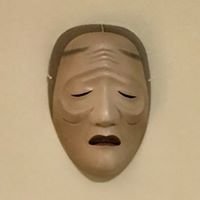
Cofanetti Cartone con monete incastrate..........
Alan Sinclair ha risposto a un topic di AndreaMCMLXXVIII inviato in Euro Monete da collezione Italiane e delle altre Zecche Europee.
Secondo me l'incastro della capsula è intenzionalmente voluto per evitare durante il trasporto che la capsula salti fuori dal suo alloggiamento. -

ID Solidus ?
Poemenius ha risposto a un topic di Ajax inviato in Richiesta Identificazione/valutazione/autenticità
si anche la parte della spalla mi rimanda un po' lì ... leggo DN VA, che per quel poco che ne so è strano non sia PLA ... quindi magari mi sbaglio, sull'oro non sono fortissimo -

Moneta non identificata
Poemenius ha risposto a un topic di Goodevil91 inviato in Richiesta Identificazione/valutazione/autenticità
è una salus con prigioniero, quindi non può essere la 2108 plausibilmente Valentiniano II -

ID Solidus ?
Poemenius ha risposto a un topic di Ajax inviato in Richiesta Identificazione/valutazione/autenticità
a prima vista mi sembra uno stile gallico... ma potrei sbagliarmi -

I tremissi che non dovrebbero esistere...
Poemenius ha risposto a un topic di antvwaIa inviato in Monete Bizantine
Cominciamo con il dire che molte di queste monete sono legate da identità di conio, in alcuni casi, anche solo di dritto... 5 e 8 2, 3, 10, 11 e 12 1 e 9 ... forse sono spurie a mio avviso la 4 e la 7 ... sile difforme e in un caso, la 7, apparentemente imitativa la veste della 4 mi fa addirittura pensare a un'altra area geografica ..... tolte queste 2, che oggettivamente non c'entrano nulla, la cosa è più omogenea secondo me il minimo comune denominatore non può essere il "mix di conii" perché altrimenti ci sta dentro tutto, ma la 7 e la 4 sono evidentemente spurie rispetto alle altre, anche stilisticamente -

ID Solidus ?
Ale75 ha risposto a un topic di Ajax inviato in Richiesta Identificazione/valutazione/autenticità
Buongiorno, sembra essere un solido Victoria Avggg con imperatore seduto e sul dritto imperatore con lancia (se ne vede una parte)...ne ho visti un po e quello piu vicino mi sembra Maggioriano ma è solo un ipotesi. 🙂 -
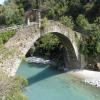
Carlo Emanuele III - Doppia 1767
savoiardo ha risposto a un topic di Oppiano inviato in Monete e Medaglie dei Savoia prima dell'unità d'Italia
Quattro aste in quattro anni... Adesso finalmente riposa! Moneta di data mai vista! -
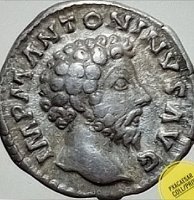 Pxacaesar ha cambiato la sua foto del profilo
Pxacaesar ha cambiato la sua foto del profilo -
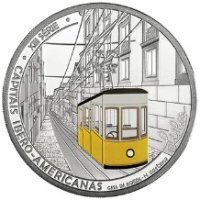
Cofanetti Cartone con monete incastrate..........
Carlo. ha risposto a un topic di AndreaMCMLXXVIII inviato in Euro Monete da collezione Italiane e delle altre Zecche Europee.
Avevo riscontrato lo stesso problema sulla ciambella della Vespucci. Ho rinunciato a rimuovere la moneta dalla scatola 😭 -
Raccolta di rebus attinenti alla Numismatica
esperanto ha risposto a un topic di apollonia inviato in Agorà
AND Ares: P esso adorano = andare spesso ad Orano. Buona giornata! -
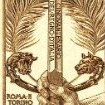
Filatelia Monumenti di carta. (Carrellata di francobolli dal mondo)
PostOffice ha risposto a un topic di PostOffice inviato in Filatelia e Storia Postale
-
 Soun ha cambiato la sua foto del profilo
Soun ha cambiato la sua foto del profilo - Ieri
-

Metaponto , contromarca ...
Deinomenid ha risposto a un topic di joannes carolus inviato in Monete greche: Sicilia e Magna Grecia
Ho il saggio ma non riesco a caricare le immagini. Questa è una trascrizione delle prime 3 pagine – penso che copra tutto, ma se hai bisogno di altro, fammelo sapere. THE BRONZE COINAGE OF METAPONTUM Ann Johnston (Plates XXXV – XXXVIII) The bronze coinage of Metapontum is far more diverse and abundant than that of most of her South Italian neighbours. It would appear to have been struck intermittently over roughly a century and a half, although dating is (as we shall see) uncertain since there is very little direct connection between the bronze and the silver coinage, and very few unambiguous clues as to sequence and chronology. The outline of the coinage that is presented here is therefore extremely tentative, and is intended to provide some idea of the range of types, grouped in a preliminary classification. The best hope of establishing a more reliable chronology lies with the archaeologists currently at work on the site of the city and in the chora, who may ultimately be able to fit the coinage into the framework provided by other finds, and so settle some of the questions which for the moment seem perplexing. The catalogue does not set out to be a corpus, but simply to list the types with such published and unpublished specimens as can be identified with reasonable certainty. The condition of many of the surviving specimens makes die comparison a hazardous if not impossible task, and no attempt has been made to indicate die identities. The worn or corroded condition of many pieces should be borne in mind with regard to weight ranges; the diameters given are approximate medians. The material for the catalogue has been compiled in the course of visits to major collections over the years, mainly in pursuit of Metapontine silver, and I am deeply grateful to the curators who have made my work possible. My special thanks to all those who supplied casts and photographs. (*) This topic seemed the most appropriate that I could offer in honor of Colin Kraay, because we had worked on it together and I could not now say which ideas were originally mine and which were his. The paper arose out of my contribution to the new edition of Historia Numorum, which Colin had the thankless job of editing. He applied himself to my MS with characteristic energy and produced an alternative draft of the section on bronzes. After an exchange of further alternatives we spent a fruitful day together in Cambridge (thanks to the helpfulness of T. R. Volk), trying to arrive at a plausible arrangement. The whole exercise was typical of Colin’s generosity with his time and knowledge. I gave him the final version just before his death, but that has now been considerably expanded, unfortunately without the benefit of his unfailingly constructive and friendly criticism. It was a great privilege to have known Colin as a scholar and a friend. CATALOGUE A. Last quarter of fifth century to mid fourth century Obv. Tripod; sometimes symbol or letter in field. Rev. META at l. or r. Barley ear with leaf to r. or l., caduceus in l. field? a. no symbol. SNG Copenhagen 1250*. b. barley grain in field. McClean 1002*; Berlin Löbbecke; Berlin Peytrignet. c. snake at l.; P at r. SNG Munich 1020*. d. star at l. Berlin Fox*. 16 mm 4.3 gm. Obv. META or ME:TA Tripod. Rev. H:E or T:E (retrograde) Barley grain. SNG Copenhagen 1270*; SNG ANS 572; BM Lincoln; Berlin 179/1879; Berlin Peytrignet; Berlin Imhoof; Berlin Löbbecke; Vienna 4256-7. 12 mm 2.1–1.59 gm. The tripods resemble those on the earliest double-relief coinage of Croton: plain, without any structure in the centre of the bowl and with unornamented rings to brace the legs. The alternative legends on the reverse of 2 are puzzling; it seems unlikely that they indicate the denomination since clearly there is no difference in weight or diameter between the two, and the barley grain identifies the denomination. 1 and 2 are presumably unit and half respectively. Many of the flans show slight traces of two lugs where the flan was broken off from a “tree.” Obv. Hermes, wearing chlamys and petasos, standing l., sacrificing over thymiaterion, caduceus held over l. shoulder; EY downwards at r.; O at lower r. Rev. ME at l.; OBOΛΟΣ at l. Barley ear, with or without leaf to r. SNG Oxford 805; SNG Copenhagen 1242; SNG Lloyd 408; SNG ANS 552; BMC 164; BM (2 exs.); Paris 1225-6; Hunter 56; Vienna 4171-2; Berlin (4 exs.); private collection*. 20 mm 9.5–7.5 gm. Obv. MET downwards at r. legible on some specimens. Head of Demeter r., wearing barley wreath and pendant earring, her hair gathered under the wreath as Noe 506. Dotted border visible on some specimens. Rev. OBOΛΟΣ upwards at l. Barley ear with leaf to r.; poppy seed pod above. SNG Oxford 806; SNG ANS 554; BMC 165-6; BM (2 exs.); Berlin (2 exs.); Vienna 4170; private collection*. 20 mm 10.7–7.5 gm. Obv. NIKA below neck tranche. Female head r., with hair gathered in roll at back of head, wearing single pendant earring; O behind head. Rev. M:E Barley ear with leaf to r.; ithyphallic herm wearing petasos at l. SNG ANS 553; SNG Copenhagen 1243; SNG Lloyd 407; BMC 167-8; McClean 1004-6; Weber 791 (now BM); Hunter 57-8; Berlin (5 exs.); Paris 1227; Vienna 4173-4; private collection*. 20 mm 10.7–5 gm. The explicit identification of the denomination is a very unusual feature and led Giesecke (Italia Numismatica, p. 115) to believe that this was an emergency issue struck during the Pyrrhic Wars. The general style of the coins, in particular the barley ear on the reverses which closely resembles those of Part 2 Class VIII of the silver (1), suggests rather the middle of the fourth century, and the choice of bronze instead of silver for striking fractions does not necessarily indicate an emergency. Silver fractions were not struck at Metapontum between the end of the fifth century (Noe 363-5) and the last quarter of the fourth century (e.g. SNG Copenhagen 1231ff.), and in any case represented multiples of the obol (triobol or diobol); bronze made possible much smaller denominations that allowed a wider range of transactions to be monetized. Hermes, whose head occurs several times as a bronze type, appears here in his commercial capacity. The standing figure is reminiscent of the earliest double-relief types in silver at Metapontum (Noe 311-20), but is clearly much later in date. The Demeter heads are closest in style to Part 2 Class VIII except that the goddess wears the barley wreath that becomes standard on the silver only in Part 3; on the bronze, she is never shown wearing a filmy veil on the back of the head (cp. SNG ANS 415ff.), characteristic of the early issues of Part 3. The poppy seed pod recurs as a symbol on the silver at the very end of Part 2 (Noe 516, SNG ANS 402) and a small bronze denomination (16). The Nike head is labelled, like Noe 450ff. and 495, to distinguish her from Demeter; the style again resembles the late Part 2 silver. All three types were struck from a number of different dies and on a variety of flans. Some were struck on the bullet flans later common in Sicily which leave characteristic projecting lugs at opposite sides of the flan; others are regular “pancake” flans with rounded edges, while a few have bevelled edges. Relief is low, even on the rare well-preserved specimens. The three issues were alone represented in IGCH 1935; their recorded condition does not allow a sequence to be established. Bronze of this module was never struck again, and most of the subsequent bronze fractions are very much smaller. Some of the types listed below may well have been contemporary with the obols. Obv. Female (?) head r., hair gathered as Noe 506, etc. Rev. MET at l. Barley ear with leaf to r., no symbol visible. Paris, Seymour de Ricci* 15 mm 4.6 gm. Obv. Head of Demeter r., hair gathered in sakkos. Rev. META upwards at l. Barley ear with leaf to r., TEI upwards under leaf. Cambridge (Leake)*. 16 mm 4.19 gm. Obv. Head of Demeter r., hair gathered in sakkos. Rev. M:E and TEI to l. and r. of type. Barley grain. McClean 1008; SNG Copenhagen 1269; Weber 797 (now BM); Naples Santangelo 4315; Milan (2 exs.); private collection*. 13 mm 2.1–1.7 gm. Obv. Head of Demeter or Artemis r., hair in topknot (cp. Noe 480-1; 70). Rev. MET at l., TEI at r.; or M:E to l. and r. of type. Barley grain. Naples Santangelo 4316; Vienna 4241; private collection*; Berlin (2 exs.). 13 mm 2.04–1.6 gm. Obv. Head of Athena r., wearing Corinthian helmet. Rev. ME at l., TEI at r. Barley grain. Weber 798 (now BM)*; Vienna 4249 (indistinct). 13 mm 1.95–1.8 gm. Obv. Head of Apollo laureate r. Rev. META upwards at l. Barley ear, ant at r. Paris 1229*; Berlin Rauch. 16 mm 3.85–2.5 gm. Obv. Head of bearded male r., wearing diadem (?). Rev. ME.. at l. Barley ear with leaf to r.; symbol illegible. Naples Santangelo 4278; Vienna 4176*. 16 mm 4.4 gm. -

Raccolta di rebus attinenti alla Numismatica
apollonia ha risposto a un topic di apollonia inviato in Agorà
apollonia -
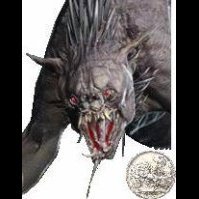
Milano Numismatica
El Chupacabra ha risposto a un topic di El Chupacabra inviato in Segnalazione mostre, convegni, incontri e altro
È già partita la raccolta di articoli per il Gazzettino #13, mi permetto di ricordare a chi volesse partecipare di attenersi alle seguenti regole:
Lamoneta.it
Il network
Hai bisogno di aiuto?
